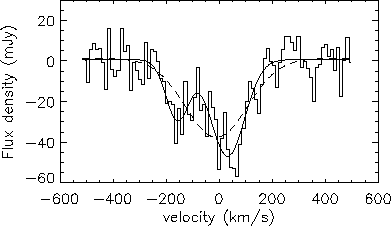
This was made from wavelengths on either side of the atomic hydrogen line. The radio core of Cygnus A is faint but easily visible in this image, midway between between the two giant lobes.

Although the radio lobes appear similar to the image above, the compact radio core has almost vanished - a clear sign of absorption by neutral gas around the nucleus of Cygnus A.
(Due to the narrower frequency band used, this image is more noisy than the continuum image above).
